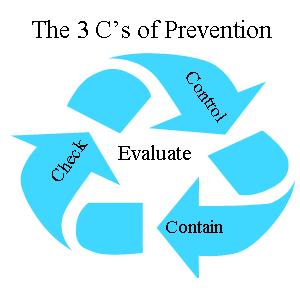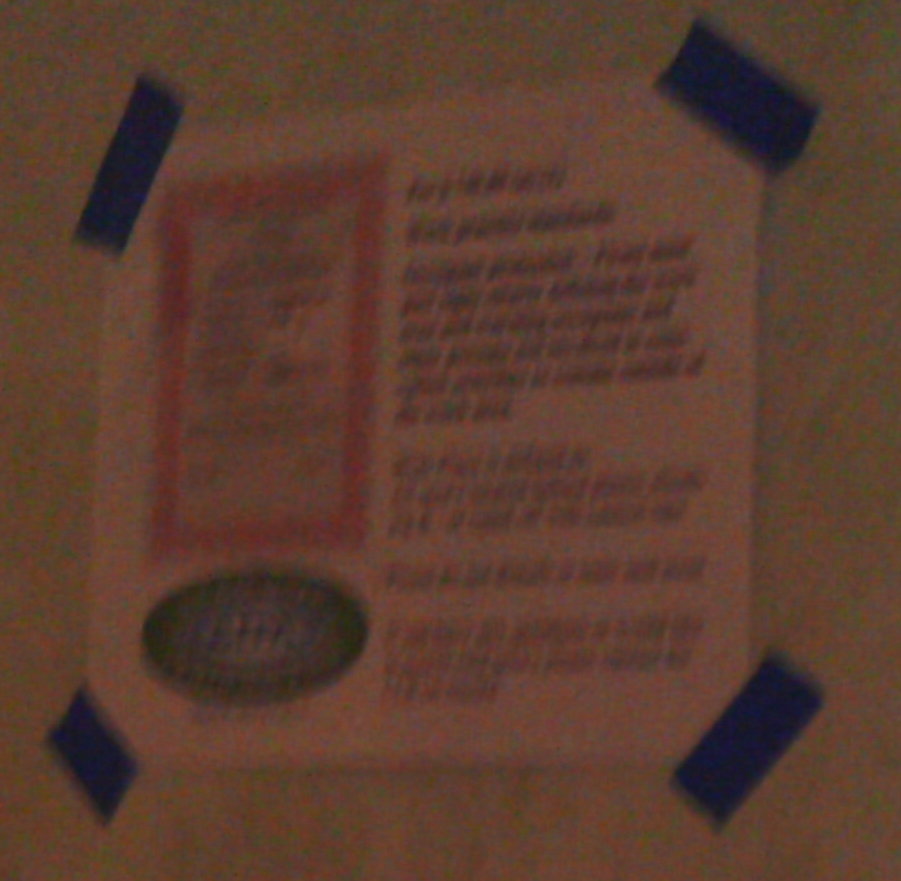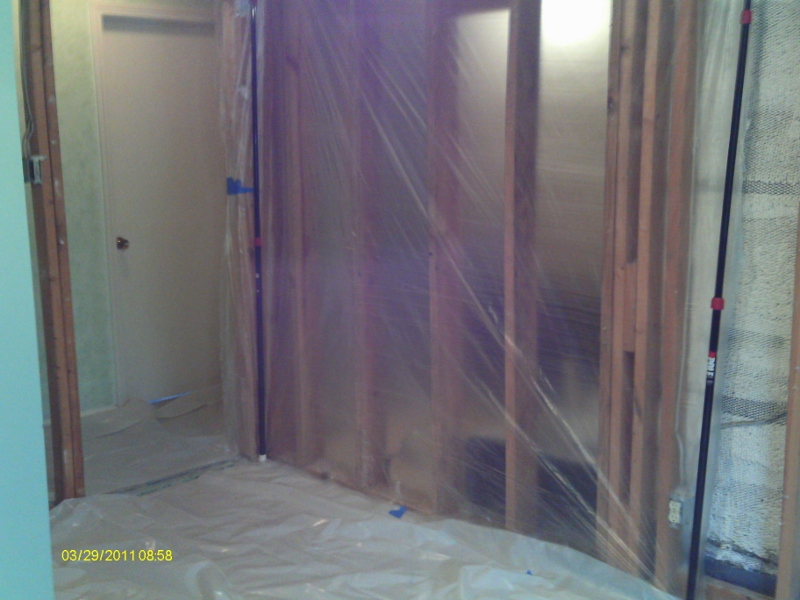 In last week’s Safety Sunday Article we introduced the concept of the 3 C’s as they apply to Safety and Prevention. As we mentioned in that article, we are going to delve into each one of those & see how it applies to one working on their houses that may contain lead. In this case, preventing lead from affecting ourselves, our family, and any visitors coming over. While we chose to use lead as our baseline, many of these steps apply to almost any project you may take on around the house. One of the main reasons we choose lead, was that while the EPA created the RRP program for contractors, they hardly spent any time dealing with one of the largest segments out there – the DIY market.
In last week’s Safety Sunday Article we introduced the concept of the 3 C’s as they apply to Safety and Prevention. As we mentioned in that article, we are going to delve into each one of those & see how it applies to one working on their houses that may contain lead. In this case, preventing lead from affecting ourselves, our family, and any visitors coming over. While we chose to use lead as our baseline, many of these steps apply to almost any project you may take on around the house. One of the main reasons we choose lead, was that while the EPA created the RRP program for contractors, they hardly spent any time dealing with one of the largest segments out there – the DIY market.
Evaluate or Concept?
Before we get started on the first C aka Control, Paul Hamtil of Hamtil Construction of St Louis made a great observation via Twitter. “My only thought was a significant amt of prevention starts with a well-thought, well-implemented Concept. Evaluate (IMO the Crux) the concept from start, implement to best of ability and the other C’s only are fail-safes.” John D. Poole of Birmingham Point then amplified this with his comment; “I think that what you refer to as Evaluate is really the thing that ties the other three components together and ensures that they are kept in motion. It’s a reminder to be constantly vigilant, reflective, and proactive in managing the other three.”
As we stated in our last article “the word Evaluate… is actually the most important word that happens to be in the bulls-eye spot. All too often, many people concentrate on just one or two of the items and forget the third to their peril.” With that in mind, you need to evaluate what you are going to do, what you need, what the issues may be, what any side effects may be, and develop a plan around that. Paul also went on, maybe there, should be a 5th C for Common Sense, as in know your limits, or as I like to joke around – unfortunately you can’t run to the Pharmacy to buy some common sense, but you sure can buy the bandages their…
Control Access:

 One of the main items of the RRP is that no one is allowed in the work area unless they are trained to work safely in said environment. A couple of their requirements are to either utilize warning tape &/or barricades, and have signage posted (as shown above) to prevent anyone from entering said areas. While this maybe overkill for many of your projects, if you do have youngsters & pets, you should make sure they cannot wander into the area and possibly get injured or in the case of lead dust, get it on their hands & ingest it.
One of the main items of the RRP is that no one is allowed in the work area unless they are trained to work safely in said environment. A couple of their requirements are to either utilize warning tape &/or barricades, and have signage posted (as shown above) to prevent anyone from entering said areas. While this maybe overkill for many of your projects, if you do have youngsters & pets, you should make sure they cannot wander into the area and possibly get injured or in the case of lead dust, get it on their hands & ingest it.
Control the Dust Created:
Ahhh, bring on the power tools – I will just use the Roto-Zip® & open this wall up in seconds… Ahhh, but this leads to one issue, once you break out the power tools, the dust created can jump up by a factor of a 100. Most of the pictures you will see in these articles were of a bathroom that was fully gutted using just hand tools. While I did use a Roto-Zip in another area, I was following the cut with a HEPA vacuum to capture the bulk of the dust as it was created. (Sorry, no pictures as I only have two hands) While using power tools can speed up a job, you need to consider how you will control the dust created.
Control your environment:
Should you wear a respirator, Tyvek suit, etc… for every little job – not necessarily. Should you use some common sense and control your working environment based on what you are doing – Yes. In most cases, one should be wearing gloves, and safety glasses while working on one’s own house. If you are creating dust, by sanding, doing some demo, etc… a respirator should also be worn. As for the Tyvek suits, we generally will not pop them on unless we are kicking up a ton of dust (tearing down a plaster wall) or dealing with areas containing mold or mildew (as a homeowner you also need to be wary of asbestos).
Additional EPA Controls:
The EPA has placed certain prohibitions on contractors which I think bear adding; The use of open-flame burning or torching of lead-based paint, or using a heat gun that can reach 1100° or higher. The main reason for this is the possibility of vaporizing the lead paint, which is worse than breathing in the dust. The final prohibition is using a machine to remove lead-based paint through high-speed operation (sanding, grinding, power plane, needle gun, abrasive blasting, or sandblasting) unless you are using a HEPA exhaust control.
In next week’s article, we will look into some of the methods that one can contain the dust & measures required by the EPA for contractors.

Sean, I appreciate your insights and for including my comments on the 1st installment. We know lead hazards are real and that contractors and DIY’ers alike should abide by lead safe work practices. Is it realistic to believe that the paint stick lead warnings are sufficint to affect how folks conduct their business? No way. I don’t expect any real education or help to come either, as I have seen a lack of such in the RRP rule implementation. We are left to our devices, which futher reinforces EVALUATE what you are doing before you do it and create a hazardous situation.
No, thank you for the great comments which helped flesh out the points I was trying to make but just couldn’t seem to get them out properly. Thanks again Paul & I look forward to some other great comments in the future
Sean, I appreciate your insights and for including my comments on the 1st installment. We know lead hazards are real and that contractors and DIY’ers alike should abide by lead safe work practices. Is it realistic to believe that the paint stick lead warnings are sufficint to affect how folks conduct their business? No way. I don’t expect any real education or help to come either, as I have seen a lack of such in the RRP rule implementation. We are left to our devices, which futher reinforces EVALUATE what you are doing before you do it and create a hazardous situation.
No, thank you for the great comments which helped flesh out the points I was trying to make but just couldn’t seem to get them out properly. Thanks again Paul & I look forward to some other great comments in the future